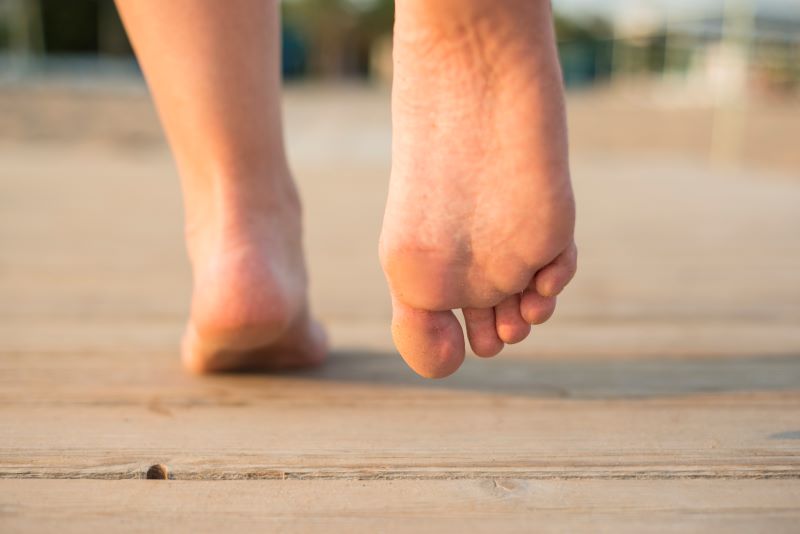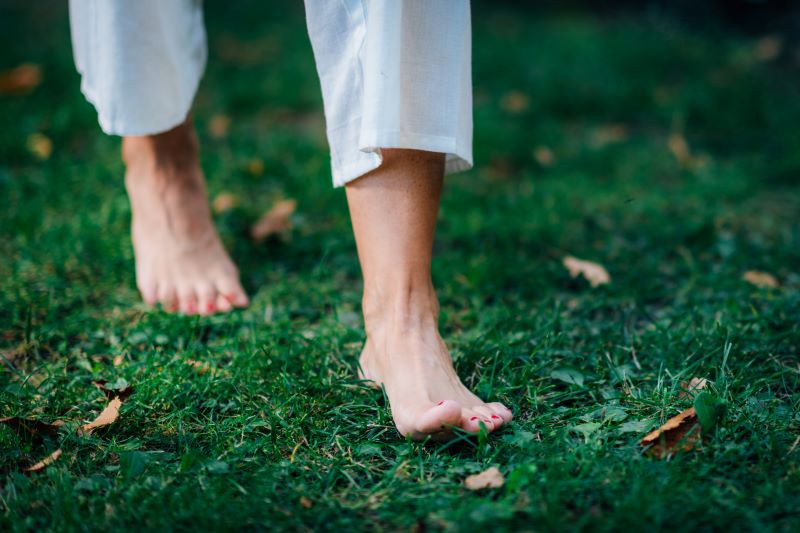Feet are a huge indicator of one’s overall health. Not only can your feet affect your health, but your health can also impact your feet. Many health issues manifest themselves as foot-related issues. Even conditions you might not normally associate with feet. Movement, weight, diet, and illness can all impact the health of your feet.
There are many health issues that may affect your feet. Some may only affect your feet, like plantar fasciitis. Others may have a wide variety of symptoms that happen to affect your feet, like diabetes. Plantar fasciitis involves inflammation to ligaments in the feet while diabetes can cause nerve and circulation damage. You may not think of your feet when you consider your health, but they’re an important part of how your body functions. Many diseases affect nerves, circulation, and joints. All of which are very important for maintaining your foot health.
 Raynaud’s Disease
Raynaud’s Disease
Raynaud’s disease is a condition that often affects extremities like hands and feet. It is also called Raynaud’s syndrome or phenomenon. It is a condition that causes parts of the body to become cold, numb, and change color. When someone has Raynaud’s disease, certain parts of their body react severely to cold. Their hands or feet may turn white and become very numb. As they warm themselves, they’ll continue to feel a prickly sensation. Their skin may turn from white to blue as they continue to get warm. Eventually, they should regain their normal color and feeling.
Raynaud’s disease is not a very dangerous disease, but it can be difficult to deal with. It may even be scary if you are experiencing symptoms for the first time. It’s not known what exactly causes Raynaud’s disease. Some people may experience the disease on its own, without any other illnesses. Others might experience Raynaud’s syndrome alongside another condition like lupus or rheumatoid arthritis.
Symptoms of Raynaud’s Disease
Raynaud’s disease can affect any part of the body but it is most common in the extremities. It can affect your hands, feet, and face. If you’re experiencing Raynaud’s disease, your feet will turn pale or blue when exposed to cold. This is usually most common in the toes. They will become very numb. Most symptoms go away when patients are able to warm themselves.
People with mild symptoms can usually manage Raynaud’s on their own. Gloves, socks, and hand warmers help prevent and reduce symptoms. More serious cases can cause nerve damage over time. In these cases, doctors will try to reduce Raynaud’s frequency and severity. Medications that relax blood vessels can increase blood flow to affected areas, thereby alleviating symptoms. Surgery can also be used to remove nerves involved in Raynaud’s attacks. When this is done, symptoms become milder and less frequent.
 Peripheral Arterial Disease
Peripheral Arterial Disease
Peripheral arterial disease (PAD) is another illness that affects how blood flows to certain extremities. Also called peripheral artery disease, this illness makes it difficult for blood to flow through arteries that reach the arms and legs. PAD most often affects the legs, causing pain after walking or exercising.
When there is not enough blood flowing to the legs, your feet may be unusually cold. You might also experience numbness, pain, or a weak pulse in the affected areas. Some symptoms aren’t as commonly associated with poor circulation. It’s important to recognize these symptoms as a sign of PAD as well, even though they might be difficult to notice. PAD can cause shiny skin, skin color changes, hair loss, sores on the feet, and even slower toenail growth. Who knew your toenails had such an impact on your health? When the disease is particularly bad, you may also experience pain even when you aren’t being active.
PAD is caused by a buildup of plaque in the arteries Plaque in the arteries has many negative effects, including blood clots. These blood clots can be deadly, causing heart attacks and strokes. People who smoke, have diabetes, or have an unhealthy diet can increase the risk of developing plaque.
PAD is treated through lifestyle changes. Quitting unhealthy behaviors like inactivity or smoking can significantly improve symptoms. Medications can also be used to treat the disease. Medications designed to control cholesterol, blood pressure, and blood sugar all help. Pain relievers can reduce the pain felt when symptoms flare up. Doctors may also prescribe drugs that prevent blood clots since PAD is also caused by plaque in the arteries. PAD can cause pain in the feet and legs but can be managed with healthy choices and medication. Surgery can be performed to open up arteries in serious cases.
Hypothyroidism
Hypothyroidism occurs when the thyroid is underactive, meaning it is not functioning as it should. The thyroid is a gland in the neck that produces hormones that affect your growth and metabolism. Since the thyroid affects so many different parts of the body, hypothyroidism has a wide array of symptoms. These symptoms look different across ages as well.
In infants, hypothyroidism causes difficulty breathing, a large tongue, and jaundice. For children, it can cause poor development, both mentally and physically. In adults, the disease can cause fatigue, pain, weight gain, impaired memory, and dry skin. Dry skin is commonly reported on the feet. Many patients suffering from hypothyroidism experience dry, cracked skin along the bottom of their feet.
Hypothyroidism is usually caused by an auto-immune disease, radiation, or medication. It is treated with a synthetic thyroid hormone that brings hormones back to a normal level. Once hormones are back to a typical level, symptoms go away.
 Health and Feet
Health and Feet
It’s no surprise feet can tell you a lot about your health. They’re a pretty major part of your body. Looking at your feet can clue you into important changes going on in your body. Pale, numb feet in response to cold weather might mean you have Raynaud’s disease. Pain after exercising could be a sign of PAD and harmful plaque in your arteries. Something as simple as dry skin on the bottom of your feet could indicate a problem with your thyroid, which is a very important gland. Whatever you’re experiencing with your foot health, it’s important to bring it to a professional. The Foot and Ankle Specialists of Illinois understand foot health and how to keep every part of you healthy.

